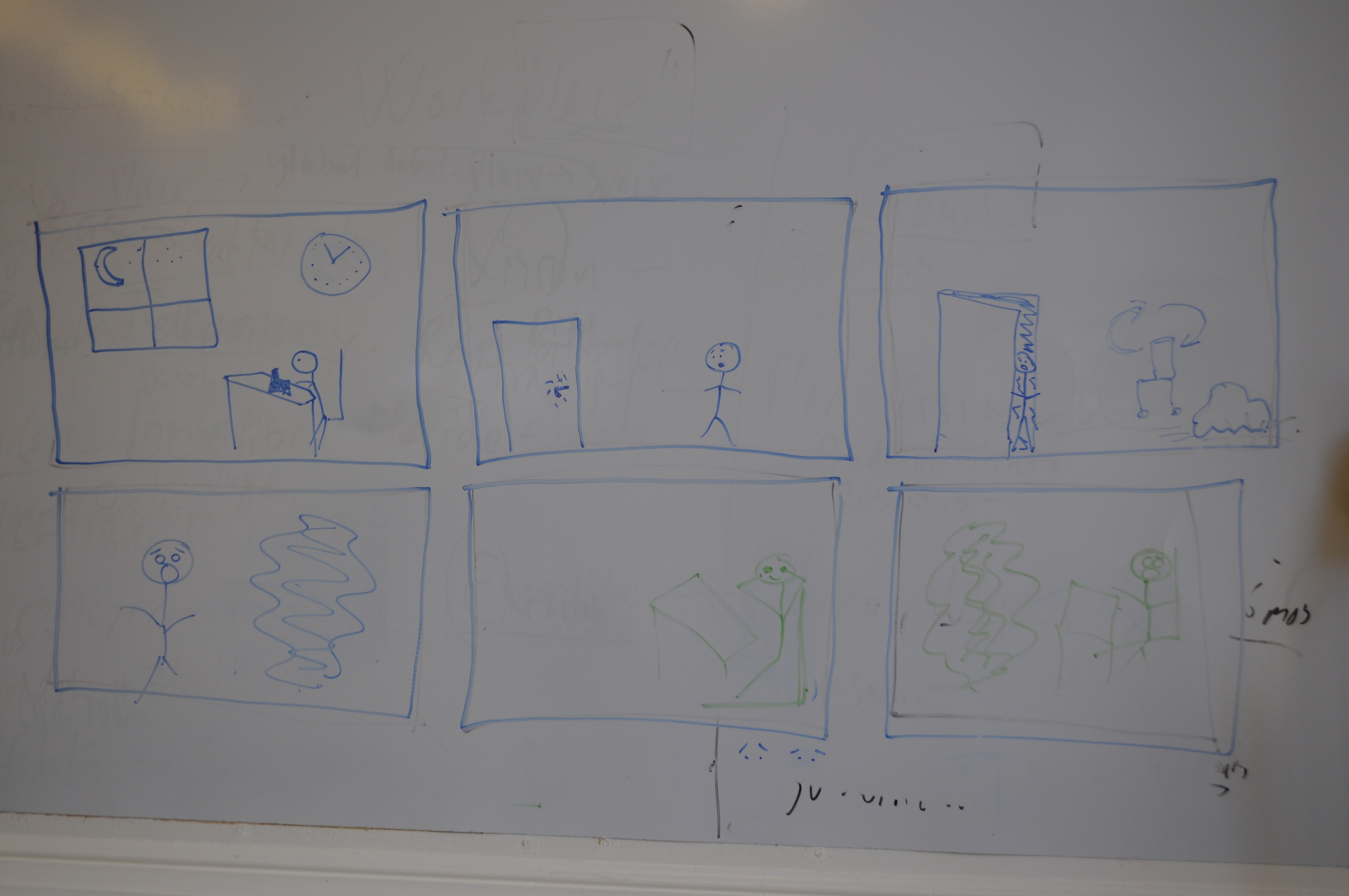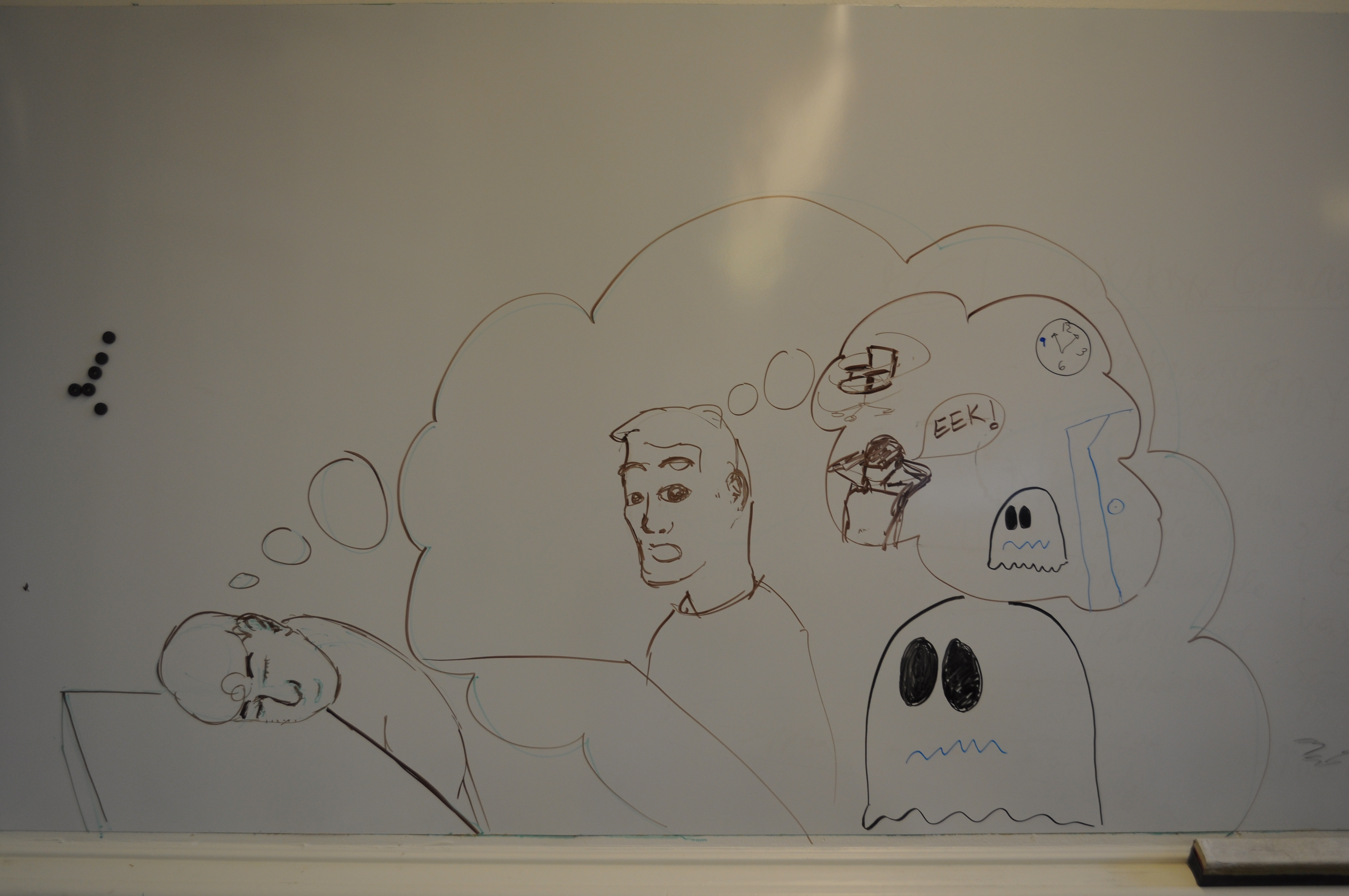Bits and bobs for next week:
* read the recommended pieces. The piece on narrative music has a nice breakdown of the movie Jaws; you may want to poke around on YouTube for some more leitmotifs–there are some pretty fun ones out there, like the Pink Panther for example. If this book is in your library, it may be worth skimming: ‘Sound design: the expressive power of music, voice, and sound effects in cinema’ By David Sonnenschein.
* reflect on how sound is used on news programs, TV soap operas, TV comedy, films…… if you happen to be watching something this week, turn the sound down and experience what the difference is for your experience, and/or play with adding different music sound tracks to things you are watching.
* for next week also bring a short video to edit, we will play around with sounds – if you have time feel free to create a couple of pieces with different sound tracks.
* Check these out on YouTube:
Early film: http://www.youtube.com/watch?v=NGu9S0GeGps&feature=related
Sound effects: http://www.youtube.com/watch?v=eWSGwgORBeM
Hitchcock’s Blackmail (1929) – http://www.youtube.com/watch?v=DfTBxs8KPRI – watch from 45 minutes in to 50 minutes in. This sequence was very famous in terms of the psychological uses of sound.
Documentary: http://www.youtube.com/watch?v=TjQ4CEs-c3E&feature=related – irritating ’80’s bloke so I would start at 1 minute 30 seconds to minimise his intro.
Famous for sound: http://www.youtube.com/watch?v=24sB2hxrU3g – the Jazz Singer, recorded sound
http://www.youtube.com/watch?v=hZE4GnXidrg&feature=related — a little overblown but some nice examples
http://www.youtube.com/watch?v=vrhRsZ56b4g – the trailer for The Conversation – Coppola’s film is all about sound and what is heard versus what is seen, and how it is interpreted.
Finally, a useful distinction that we discussed in passing today is the following — bear this in mind as you are watching this week and as you are thinking about what you would like to do with sound for your class project: Diegetic sound versus Non-diegetic sound
Diegesis is a Greek word for “recounted story”. The film’s diegesis is the total world of the story action. Diegetic sound, therefore, is a sound whose source is visible on the screen or whose source is implied to be present by the action of the film. Examples include:
* voices of characters
* sounds made by objects in the story
* music represented as coming from instruments in the story space
( = source music)
Diegetic sound is any sound presented as originated from source within the film’s world. Diegetic sound can be either on screen or off screen depending on whatever its source is within the frame or outside the frame. Another term for diegetic sound is ‘actual sound’.
Non-diegetic sound is sound whose source is neither visible on the screen nor has been implied to be present in the action. This could be:
* narrator’s commentary
* sound effects which is added for the dramatic effect
* mood music
Non-diegetic sound is represented as coming from the a source outside story space. Another term for non-diegetic sound is commentary sound.
The distinction between diegetic or non-diegetic sound depends on our understanding of the conventions of film viewing and listening. We know of that certain sounds are represented as coming from the story world, while others are represented as coming from outside the space of the story events. Playing with diegetic and non-diegetic conventions can be used to create ambiguity (horror), or to surprise the audience (comedy).




